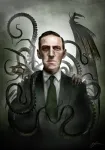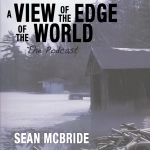The Lord of the Rings; The Fellowship of the Ring, The Extended Edition

“The ring passed to Isildur, who had this one chance to destroy Evil forever. But the hearts of men are easily corrupted. And the ring of power has a will of its own. It betrayed Isildur to his death. And some things that should not have been forgotten were lost. History became legend, legend became myth and for two and a half thousand years, the ring passed out of all knowledge until, when chance came, it ensnared a new bearer. The ring came to the creature Gollum who took it deep into the tunnels of the misty mountains and there it consumed him. The ring brought to Gollum unnatural long life. For five hundred years, it poisoned his mind. And in the gloom of Gollum’s cave, it waited.“
Welcome back! This week is not exactly a Blind Read, but more of an integration of other media so that we can gain a much more full and expansive understanding of what Tolkien was striving to create.
Tolkien was first and foremost a professor and linguist, and because of this, he spent much of his time in his head creating and developing languages and histories. The writing was his escapism. A young Tolkien went to war during World War I and fought along the Western Front. He fought in many battles, including the formative Battle of the Somme, which would eventually influence his writing style along with his staunch Catholicism.
During his time in the war, the mythology of Middle-earth was born. Tolkien decided to create a mythology for his homeland, England, during convalescence. He put pen to paper and began what is now known as “The Fall of Gondolin,” part of “The Book of Lost Tales.”
From there, things blossomed into other fragments and poems that would eventually become “The Silmarillion” (we will be getting to the histories eventually, even though there are supposedly contradictions and reiterations between the stories).
The Silmarillion is the basis of everything that came after, beginning with “The Hobbit.” and eventually “The Lord of the Rings.” What makes Tolkien more lasting and more entrenched in the ethos of public consciousness is the depth of his world and, thus, his histories.
Tolkien was always going to write The Lord of the Rings. However, at the behest of Tolkien’s publisher for “The Hobbit,” it became the novel that we know and not some dry history that’s as inaccessible as “The Silmarillion,” but the brilliant story that’s an extension of the history he had already created. The Lord of the Rings is the Third Age of Arda, whereas the “Silmarillion” is Arda from the beginning of time (The First Age).
The Fellowship of the Ring begins with the backstory of The Second Age, the first battle between the Maiar acolyte of Morgoth, Sauron, and his creation of the Rings of Power, or more specifically, The One Ring.
The opening quote of this essay is the passage that has stayed with me since watching it for the first time. “Some things that should not have been forgotten were lost.” Upon rewatching The Fellowship of the Ring, I was trying to watch it through the lens of the histories. How well did Jackson adhere to the story while at the same time honoring the history behind the tale? The answer is obvious because of the popularity of the movies. Peter Jackson’s team gave little hints about the history in the “Introductions” to the movies (I.E., the quote above). You would miss small moments if you were not paying attention and would not notice if you knew anything about the histories.
The first significant connection is with the Silmarils. The jewels of power that Fëanor created had a call to power, much like the One ring does in The Fellowship. However, the Silmarils do not show up, so what is the connection? It is not the back story with Ilsildur either, because he was a man of the Second Age. However, it is with the Elves of both Rivendell and Lothlórien. They are all ready to accept their destinies and head to the “Gray Havens,” otherwise known as Valinor. The tale of Middle-earth (or, even better, the larger world of Arda) begins with the Silmarillion, with Ilùvatar creating the Valar, and then later the Elves and Men. From what I have seen thus far in the Silmarillion, the Elves have an overwhelming draw to Valinor. Despite the rifts created by jealousy, Valinor is the Elvenhome.
There is much-maligned of the Elves’ decision not to take part in the battle for Middle-earth. However, by looking at things through Elven eyes (Elrond has an excellent little speech when asked to take part that lightly touches on this point), you can see that Middle-earth is not, and never indeed has been, their home. There is a slight threat that Sauron could conquer all of Middle-earth and encroach upon Valinor, but Morgoth could not even succeed in this aspect, so the thought is that his successor does not stand a chance of it. So why should the elves bother putting their lives at risk?
In the extended version, there is a scene that shows Frodo and Sam watching from the forest as wood elves sing during their exodus to Valinor. It is a shame this scene was cut from the regular version because it shows the reasoning behind the elves’ decision not to fight (to which they later decide to help). They know that the world has moved beyond their time. They are no longer the lords and ladies of Middle-earth; it has now truly become the time of men.
There is only one thing that stands out to me about the history of Middle-earth as they pass through the generations. Galadriel discusses the Rings of Power in the opening monologue and mentions that three are given (or made by?) to the Elves. I have to wonder how this correlates to the Silmarils since there were three of those crystals. Are the rings supposed to be consequent to the Silmarils? Are they supposed to hold similar power? I feel we will find the answer to that as we delve deeper into the history of Middle-earth.
Join me next week as we cover the next chapter in the Silmarillion: “Of The Flight of the Noldor.”








Leave a comment